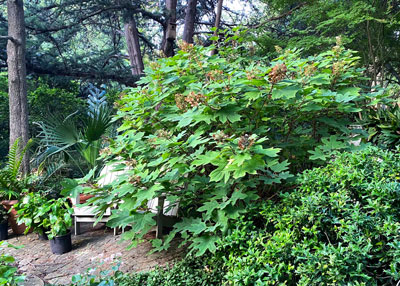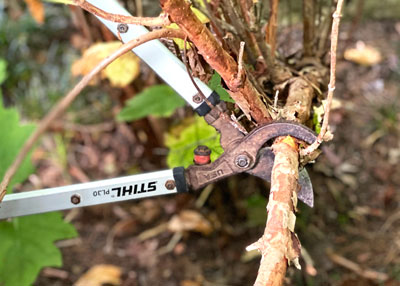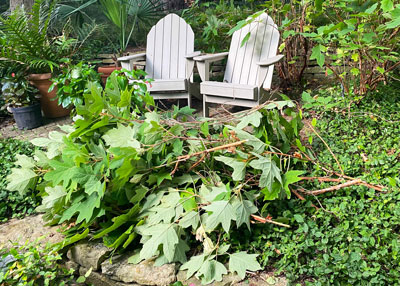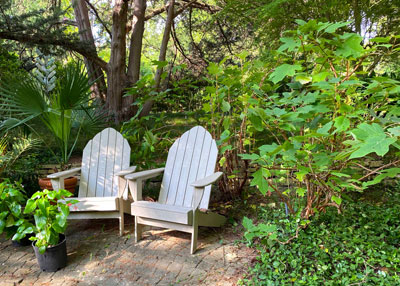Pruning Oakleaf Hydrangeas
I love oakleaf hydrangeas. The old-fashioned “mophead” types (florist hydrangeas) don’t do very well for me in the Blackland Prairie alkaline soils, but oakleaf hydrangeas are super. They’re woody shrubs that are pretty at all seasons. But wherever you live, how do you prune them?
The rule of thumb is that you prune spring-flowering shrubs right after they bloom. That gives them maximum time to regrow and reshape themselves before the next flowering time rolls around for another year.

In the Sperry landscape, however, that was the time that I was signing books until my arms were falling off, and we just got around to getting it done day before yesterday. And, it had been several years. The plants had long ago outgrown their space. I was too focused on some other improvements I’d been making elsewhere in our landscape.
So here are the steps I always follow when I’m trying to rehab a planting like this – the thoughts that go through my mind.
Steps in trimming an overgrown plant…
• Identify the most overgrown trunk of the bunch and find a good place to cut it. I try to find a place fairly far down on the trunk so that I won’t see the cut end when I’m finished.
• Repeat by finding the second most overgrown trunk of the bunch. And the third. And the fourth.

• Eventually, when you’ve trimmed away all the trunks that have grown way too tall, start removing branches that extend too far to the outsides – the ones that make the plant look misshapen.
• Remove any rubbing or competing branches. You don’t need two branches in the same places. Select the better of the two and remove the other.
• Remove all dead or damaged branches and do a final tidy-up of the plant.

• Apply a high-quality, all-nitrogen fertilizer to the soil around the plant and water the ground deeply to soak it into the soil.

You’ll be amazed at how quickly your plant will rebound with new growth. With just a little additional tip-pruning between now and frost it will look better than ever. We’ll come back and look at this planting in a couple of months here in e-gardens.
